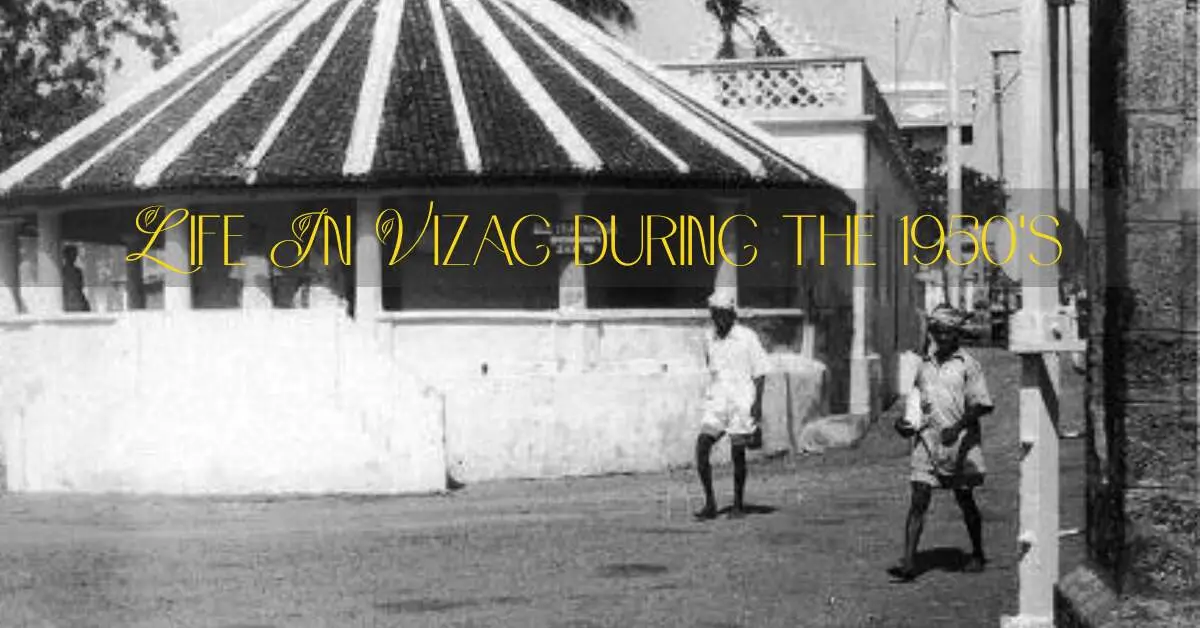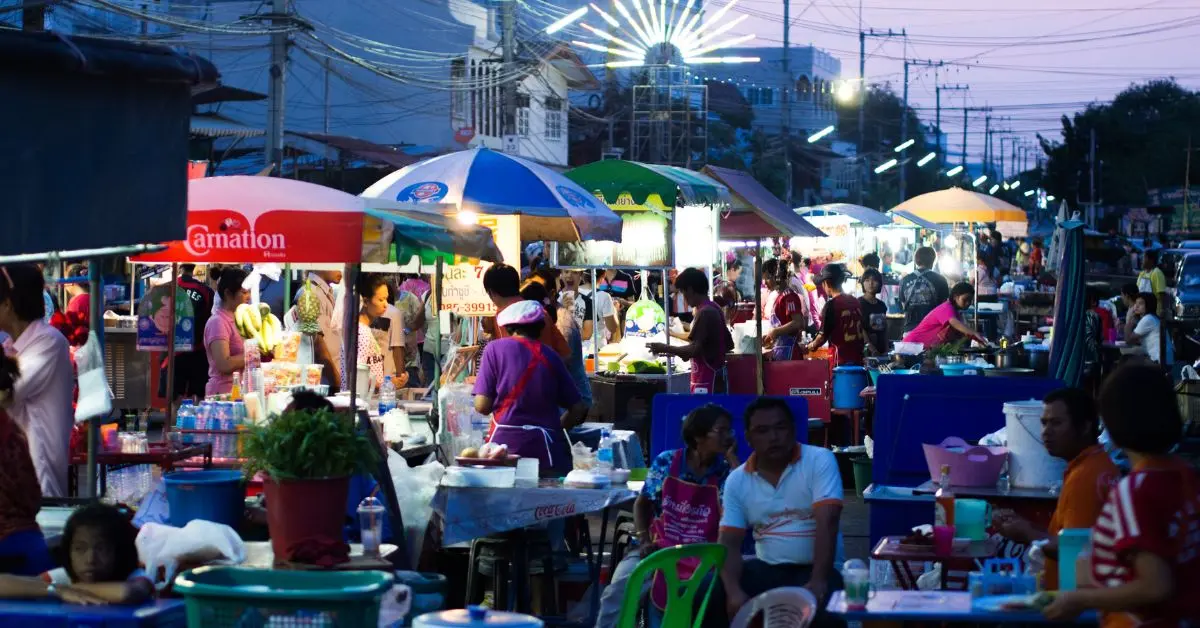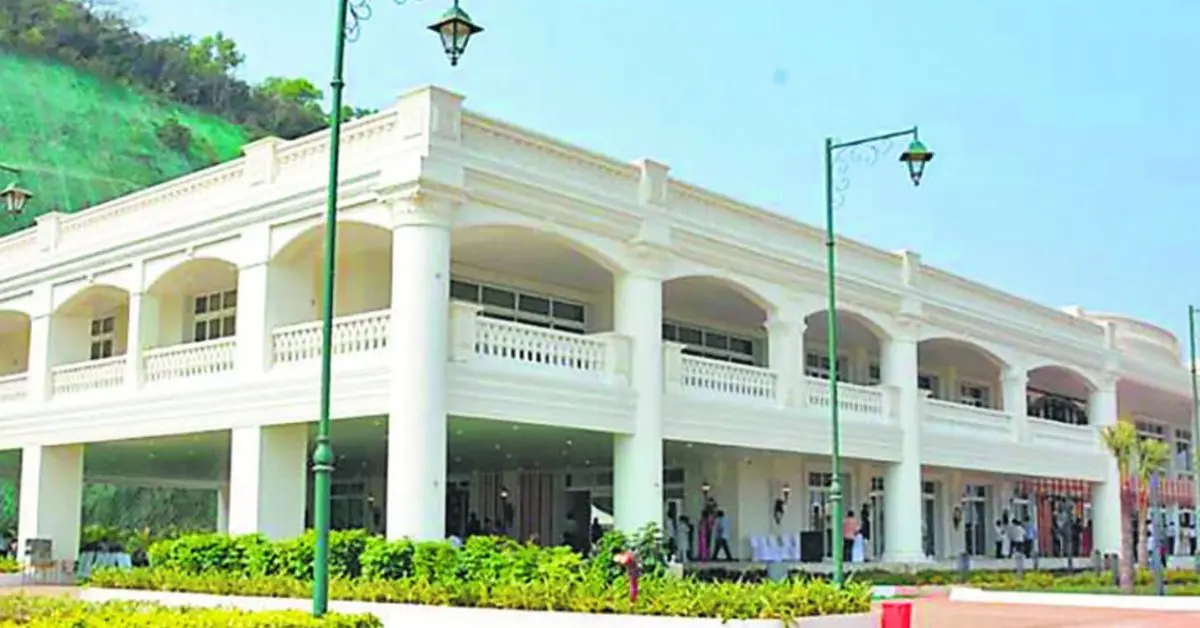Now Reading: A Day in 1950s Vizag: Stories from a Slower, Simpler Time
- 01
A Day in 1950s Vizag: Stories from a Slower, Simpler Time
A Day in 1950s Vizag: Stories from a Slower, Simpler Time

What’s a typical day in your life today in Vizag? You might scroll through reels, sip coffee at a trendy cafe, or take long drives with friends. Life feels fast and connected.
Now, close your eyes and rewind time by seventy years. Picture Visakhapatnam, not as the metropolitan sprawl you know today, but as Vizag, the quiet port town part of the Madras State. No high-rises, no honking autos, no smartphones. Just people drifting around their verandahs, and the distant sound of temple bells echoing through narrow lanes, Streets lit by kerosene lamps during the night, and the rhythmic creaking sound made by the passing bullock cart.
Feels fascinating, doesn’t it? Let’s find out what a day in Vizag felt like during the 1950s.
This article captures that essence of a day in 1950s Vizag, as beautifully remembered by Kolluru Jagannadha Rao, a native born in 1923, in his book Vi(za)gnettes.
The day would begin quietly. Most of the town would wake early. Unlike today’s hustle, there were no coffee shops or joggers in spandex. Early mornings were filled with the comforting aroma of tea brewed at home by mothers and grandmothers. Instead of buzzing alarms, the soft sounds of temple bells and devotional chants and birdsong welcomed the new day.
Around the same time, a paperboy would call out “Ee roju Hindu” (Today’s Hindu), delivering the town’s link to the outside world right at the doorstep. After these peaceful hours, the men would go to work while women and children pursued their own daily tasks.
Evenings in Vizag during the 1950s
As the day faded, Vizag transitioned into a different tune during the 1950s. Just before dusk, a familiar figure would appear to light the street lamps. He woulld carry a short bamboo ladder on one shoulder and an oil can in hand. He would stop beneath each cast-iron streetlamp, trimming the wicks with scissors kept in his breast pocket and refilling them with oil. Shortly after, another man would cycle through the streets with a hand pump, tending to the gas lamps at busy street corners. This carefully timed routine ensured that, once darkness settled, the town would glow warmly.
Evenings were not spent glued to screens but embraced outdoors. By the beach, the lighthouse near St Aloysius School sent out its guiding signal while children gathered by a dredging pipe, collecting seashells. The shoreline buzzed with spirited games of kabaddi and football, and elders, seated in circles, exchanged stories and enjoyed the cool breeze.
Patriotic songs resonated from loudspeakers opposite the Town Hall, which had previously proudly hosted stirring speeches by iconic leaders such as Gandhiji and Subhas Chandra Bose. Meanwhile, women gathered at the house of a Telegraph Department officer to listen to ‘Harikatha’ (spiritual storytelling), recited by the officer himself. Walking gracefully along the promenade were high-heeled Anglo-Indian women.
Back then, even something as routine as making a phone call required patience. One would lift the receiver, wait for the operator to answer with a cheerful “Number please?” and hope the connection went through. Long-distance calls, especially to cities like Calcutta or Delhi, had to be booked in advance as “trunk calls,” often taking hours before the line was finally connected.
Through all this, Visakhapatnam remained small, quiet, and deeply rooted in its sense of community. People found joy in the simple things, the evening breeze, a shared newspaper, spiritual gatherings, or a family picnic to Simhachalam or Yarada.
In today’s world of fast news and faster lives, remembering such days reminds us that simplicity and connection once shaped the soul of the city, and perhaps, in quiet corners, still do.
This article is relays stories shared in "Vi(za)gnettes", a memoir written by Kolluru Jagannadha Rao, a Vizag native born in 1923.
Also read: 12 perks of being a Vizagite: Why life in Visakhapatnam wins over other cities
Stay tuned to Yo! Vizag website and Instagram for more such articles.













